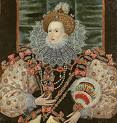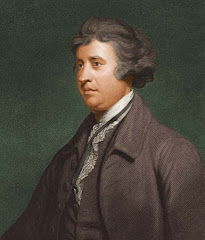Friday, 22 August 2008
Setting up the Targets
American philosopher George Santayana remarked that those who do not learn from history are destined to repeat its mistakes. On October the 26th is the anniversary of a unique event in England –a bomb attack on an mp’s home in 1965. This is a lesson that de-humanising a politician could have fatal consequences as happened to Pym Fortuyn and Theo Van Gogh. Mr.Griffiths had been Member of Parliament for Smethwick (now Warley) for just a year. He had been leader of the Conservative group on the council and won the election of 15th October 1964 against a national swing to Labour, which was led by Harold Wilson. The defeated MP Patrick Gordon Walker was Foreign Secretary designate and a personal friend of Wilson. Mr.Griffith’s turned Walker’s 3,544 majority into 1,774 for the Conservatives.
Alderman Griffiths was local-born and headmaster of nearby primary school, Fir Tree Lane. Mr.Walker lived in Hamstead Garden Suburb. Peter Griffiths lost his seat in March 1966 to Andrew Faulds (Labour) who lived in Stratford –upon-Avon!
Biased and exaggerated reporting created a dangerous climate in which Mr.Griffiths ceased to be seen as human and became a “racialist”, something to be reviled. When people are thus de-humanised they become just figures of hate it does not matter what others do to them.
Paul Foot wrote a book on this election “Immigration and Race in British Politics” and, though an excellent journalist, he could not overcome his prejudice to give Mr. Griffiths a fair examination. However, he did note Walker’s hypocrisy and commented, ”The racial bitterness stirred up…could well last for a generation. For this Patrick Gordon Walker must take his share of the responsibility.” He quoted a Birmingham mp, “look at Patrick. He never left the subject alone.”(1) Walker had issued different election leaflets for each ethnic group. While he was preaching against race discrimination, Smethwick Labour club operated a colour bar! Mr.Griffiths told the Birmingham Evening Mail, on 24/9/1964, “The Socialists are attempting to obtain the coloured vote because they think it will hold Smethwick for them.”Many current attitudes were pre-figured in this election. The recent suggestion by Trevor Philips, head of the Commission for Racial Equality, has suggested young Black boys need schooling separately. This is similar to a suggestion by Peter Griffiths in February 1964, when in response to complaints from white parents he proposed to hold special classes for Indian children who could not speak English for three hours a day. They were to be taught by their own teachers in English, maths and science and then rejoin the others for games and crafts. He was accused of trying to start Apartheid in local schools!
Some think the oppression and social engineering began with Political Correctness or the advent of New Labour under Blair, but in fact it is part of the Multi-Racialists’ mentality. The first act of positive discrimination was in 1950 when Minister of Food John Strachey(L) announced that no Government contracts would go to caterers who did not employ coloured people. In 1955 Smethwick a Conservative candidate for the council Harold had his election addresses printed in Urdu as well as English as did Conservative General election candidate John Wells did too. In 1964 Enid Blyton was being pilloried for her book "The Little Black Doll". Also in 1964 the Campaign Against Racial Discrimination sent out forms for general election candidates to sign pledging not to us race as an issue and in 3 constituencies all the candidates agreed not to mention race! Meanwhile, back at the narrative –
An offensive slogan was being posted on walls before and during the election,” If you want a N***** for a neighbour, vote Labour”. Harold Wilson attributed this to Griffiths on national Television, when asked by Robin Day on Panorama of 9th March 1964 . Mr. Wilson replied, that he understood that this was said by the Conservative candidate in Smethwick. Griffiths denied he or any member of the Conservative party had used this slogan, but did refuse to condemn its use saying it was an expression of frustration felt by local people. He explained that the only person who had heard it was Mr.Walker, who claimed it was in use in the Municipal elections of 1963. A Labour spokesman said that Wilson had said no more than was in the morning’s Times. Mr.Griffiths threatened to sue Mr.Wilson but later declined. After the Election new Prime Minister Wilson broke from his address on the Queens speech to insult Griffiths by calling him a “Parliamentary Leper”, who would be shunned by everyone in the House. This breached the convention that new members be protected until after their Maiden speech! Harold Gurden Birmingham Conservative mp (Selly Oak) told the Times 25/1/1965, “He “had not met Griffiths but would be his friend in the House.” Then on October the 5th 1964 just two weeks before polling Griffiths was denounced for his campaign in the Birmingham Post and the Times Midland correspondent wrote, ”It is abhorrent to all Conservatives candidates and officials of stature to whom I have talked.” The column of October the 12th, “Vile –its all in Black and White.”As the election result was announced on October the 16th Socialists made Nazi salutes. Mr.Walker, the embittered loser griped,” I feel the result tonight will give Smethwick a bad name.” The Bishop of Southwark called the electorate “unchristian” and the Bishop of Chelmsford and Archbishop of Canterbury were critical. Local people supporting a local-born candidate in a democratic election over a local issue is a model of Democracy at work yet, these un-elected Bishops who lived far away, were imposing their a priori ideology on the situation but not drawing inferences from the facts or observation.
The way to understand this piece of history is not through the prejudices of outsiders but through real examples. A supporter of Mr.Griffith’s campaign was Cllr. Alan Vernon, 23-years old, who had fostered a young coloured child. Mr.Vernon, who had supported Griffiths campaign, told the Times of 15th February 1965, June, “I do not think the campaign was conducted on racialist lines. I feel that immigration should be restricted. He had also fostered a young coloured child eighteen months previously. He supported the Marshall Street plan.This plan was an attempt by the Conservative council to buy the remaining houses in Marshall Street to sell to white people as 40% were occupied by coloureds people. Martin Luther King himself had addressed members of Parliament in December 1964 on his way to Oslo to collect his Noble Peace Prize and had warned of the creation of “Little Harlems”.(2) Conservative group leaders had taken the decision after meeting a delegation of worried housewives. Housing Committee chairman E. Gould remarked,” This is not colour prejudice. We understand that over thirty houses in Marshall Street are occupied by coloured people and we think they should not be allowed to occupy more than half the houses in any street.” Griffiths agreed and told the Times of 7th December, 1964 ” coloured people can only be integrated if they live alongside white people.”Later a delegation of housewives visited Richard Crossman Minister of Housing for support, who with his PPS Bob Mellish treated them harshly and upset the ladies. A request for funding was sent but turned down. Crossman a leading left-wing intellectual was proud of having opposed the 1961 Commonwealth Immigration Bill, as a “shameful piece of legislation, but wrote in his Diary,“Ever since the Smethwick election it has been quite clear that immigration can be the greatest potential vote loser for the Labour party if we are seen to be permitting a flood of immigrants to come and blight the central areas of our cities.”(3)Mellish had said “Smethwick’s name stinks and “Smethwick is well regarded in Alabama.” But in May 1976 with an influx of Malawi Asians into his own Bermondsey constituency, Mr. Mellish, then Labours’ chief whip, told the Commons, “With 53 million of us we cannot go on without strict immigration control.”
Ever consistent the BBC took Malcolm X the American Black Power leader to Marshall Street in February 1965 to film for their current affairs programme “Tonight”. He told the world’s media,” I have come here because I am disturbed by reports that coloured people in Smethwick are being badly treated. I have heard they are being treated as the Jews under Hitler. I would not wait for the Fascist element in Smethwick to erect gas ovens.” I wonder who he heard that off! He told the London Times that the BBC had taken him there for a programme on race in their current affairs programe “Tonight”. This was a mere nine days before he was assassinated after his return to the States.The BBC denied having brought him but Smethwick’s eloquent mayor Alderman C.V.Williamse investigated and revealed, that he was appalled at” the BBC bringing algebraic characters to Smethwick and then denying it. I was most amazed at the finesse displayed when I spoke of him being brought in a BBC car. I was told the car was not a BBC car but it was owned by one of the directors.” Griffiths was outraged by the visitations of extremists and wrote to the “Smegs” Telephone, “ The visit of Malcolm X was an affront to decent people and a direct provocation. That he should have been brought to Marshall Street by the BBC, which is supposed to be a responsible public corporation, makes matters worse. I say to all extremists Right and Left, black or white, get out and stay out.”
A blazing wooden cross had been left against a door in Pink Passage, with KKK painted on the pavement. The front room was a store for an Indian shopkeeper. Earlier a Labour Councillor described the council as being like “Peter Griffiths’ Reichstag.”
Mr.Griffiths also called for health checks on immigrants when he responded to a question in the local paper the “Smegs Telephone”, “Immigration should be limited to those of sound health who have jobs and living accommodation arranged before they enter.” This was prescient as there was an outbreak of Typhoid in Smethwick in April 1965. Dr.John Briant the Deputy Medical Officer of Health said ”Smethwick had contained one outbreak but another might occur if people were let into the country without health checks.”
The campaign of vilification which lasted for eighteen months and had been featured in media all across the world, culminated in a time bomb being planted outside Peter Griffith’s home. This is unique in British politics. The bomb was a battery and clock placed on a meter cover, connected by wires through the letterbox to a detonator and an explosive substance. The explosion splintered part of the front door, blew the dining room door off its hinges, broke the hinges on an upstairs door, blew off the loft entrance, smashed some windows and drove splinters into the walls and stair banisters in the hall. The police thought it the work of experts. The media created a climate in which Peter Griffiths was made a legitimate target for political fanatics. This shows that irresponsible journalists and politicians can put people’s lives in danger especially now we have many Muslim extremists in the country, if they use wild and emotive terms of abuse based on lies against an opponent.
1 Foot, Paul 1965. Immigration and Race in British Politics (Penguin)
2 Griffiths, Peter 1966. A Question of Colour (Leslie Frewin)
3 Crossman Richard1975. Diaries of a Cabinet Minister. Vol.1David Hamilton
Subscribe to:
Post Comments (Atom)











No comments:
Post a Comment